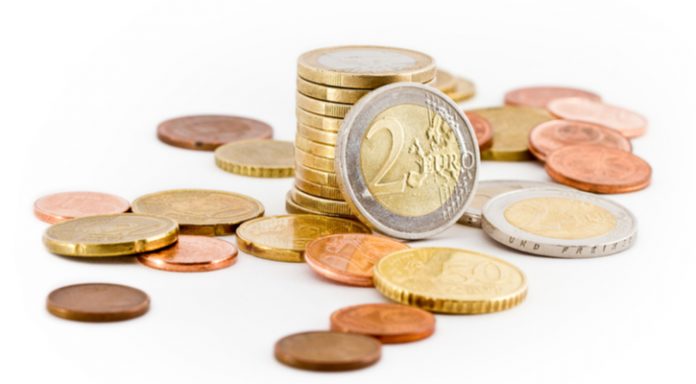Weaker wages and Brexit chaos in the UK Conservative Party sent the pound lower versus the euro across Tuesday. The pound euro exchange rate tumbled almost 100 points to a low of €1.1218 before recovering some ground at the end of the day to close at €1.1247.
| What do these figures mean? |
|---|
When measuring the value of a pair of currencies, one set equals 1 unit and the other shows the current equivalent. As the market moves, the amount will vary from minute to minute. For example, it could be written: 1 GBP = 1.13990 EUR Here, £1 is equivalent to approximately €1.14. This specifically measures the pound’s worth against the euro. If the euro amount increases in this pairing, it’s positive for the pound. Or, if you were looking at it the other way around: 1 EUR = 0.87271 GBP In this example, €1 is equivalent to approximately £0.87. This measures the euro’s worth versus the British pound. If the sterling number gets larger, it’s good news for the euro. |
Whilst the UK jobs report was supposed to provide a bit of distraction for pound investors, that didn’t prove to be the case. Slower wages growth did no favours to the pound, but Brexit was once again the central focus.
The disappointing news for the pound started early on Tuesday, after Bank of England Governor Mark Carney warned of the big economic consequences of a no deal Brexit. These big consequences would mean that the central bank would need to reconsider monetary policy. This was interpreted by pound investors that the BoE would look at lowering interest rates, to help support a weaker economy. The pound tumbled.
| Why do raised interest rates boost a currency’s value? |
|---|
| Interest rates are key to understanding exchange rate movements. Those who have large sums of money to invest want the highest return on their investments. Higher interest rate environments tend to offer higher yields. So, if the interest rate or at least the interest rate expectation of a country is relatively higher compared to another, then it attracts more foreign capital investment. Large corporations and investors need local currency to invest. More local currency used then boosts the demand of that currency, pushing the value higher. |
The pound kept on falling as pressure on UK Prime Minister Theresa May kept building. This time it was the Remainers in the UK Conservative Party who plotted to defeat Theresa May in the Commons. The rebel Remainers plotted to vote with UK Labour party to include an amendment in the trade bill whereby the UK would create a customs union with the EU post Brexit if frictionless free trade had not been agreed by January 2019.
Theresa May won the vote 307 to 301, lifting the pound as political risk receded and Theresa May kept her job for another day.
| How does political risk have impact on a currency? |
|---|
| Political risk drags on the confidence of consumers and businesses alike, which means both corporations and regular households are then less inclined to spend money. The drop in spending, in turn, slows the economy. Foreign investors prefer to invest their money in politically stable countries as well as those with strong economies. Signs that a country is politically or economically less stable will result in foreign investors pulling their money out of the country. This means selling out of the local currency, which then increases its supply and, in turn, devalues the money. |
Euro Traders Look To Thursday’s Inflation Figures
The euro was broadly lower in the previous session. The euro tends to trade inversely to the US dollar and as the dollar rallied higher, the euro dipped, although it still remained stronger than the pound.
This week has been a quiet week so far for the euro, with little on the economic calendar and few political headlines catching investor attention.
Today analysts are expecting another quiet day for the euro, with volatility potentially picking up on Thursday with the release eurozone inflation figures.
This publication is provided for general information purposes only and is not intended to cover every aspect of the topics with which it deals. It is not intended to amount to advice on which you should rely. You must obtain professional or specialist advice before taking, or refraining from, any action on the basis of the content in this publication. The information in this publication does not constitute legal, tax or other professional advice from TransferWise Inc., Currency Live or its affiliates. Prior results do not guarantee a similar outcome. We make no representations, warranties or guarantees, whether express or implied, that the content in the publication is accurate, complete or up to date. Consult our risk warning page for more details.
This article was initially published on TransferWise.com from the same author. The content at Currency Live is the sole opinion of the authors and in no way reflects the views of TransferWise Inc.





